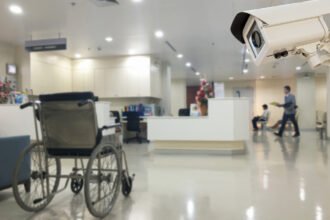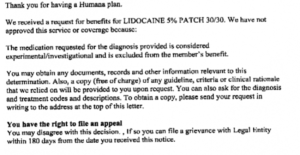

Last week we spoke with Dan Munro about value in healthcare. Today brings us to Mumbai, India, to speak with Dr Akash Rajpal of Ekohealth. I have been concentrating on the US healthcare system for this series, but in looking into what Ekohealth was doing, I was intrigued. Ekohealth is an network organization that charges a yearly membership fee and accepts anyone as a member, regardless of age or health condition. Ekohealth is not an insurance company, but rather acts as an advocate for its members, offering them visible pricing for procedures and medications and negotiating on their behalf if need be. Dr Akash maintains that his mission is to let his members know exactly how much they will pay for medical procedures in his network. He will negotiate for the best value for his members and all pricing is visible.
And now, watch the video:
To see other videos in this series, please go to this page. And if you have a story to tell that can reduce healthcare costs and raise quality of care, please comment below or email me at joan@socialmediatoday.com Thanks!
Video transcript (by TranscriptionStar)
Joan: Hello. I’m Joan Justice with HealthWorks Collective. And I’m here today with Dr. Akash Rajpal from Mumbai, India. Dr. Rajpal has background in medicine, public health, information technology and business development and he’s also the founder and the CEO of Ekohealth. Ekohealth is a new organization in India that helps its members negotiate prices and provider availability within the Indian healthcare system.
Ekohealth helps patients understand the pricing of surgical procedures and also offers them information on lower price generic medications. I asked Akash to talk with us today because some of the issues in India and the United States are similar. The lack of pricing standardization and visibility cause a great deal of confusion for everyone and anyway of making the information more clear would greatly help.
It seems that Ekohealth is trying to do this. Akash, tell us a little bit about Ekohealth?
Akash: Hey thanks for having me there. I was there in the San Francisco NASA Singularity University for three months because I won this award for the initiative which I’m doing here [Indiscernible] [0:01:29].
Joan: [Crosstalk].
Akash: So I saw a lot of problems which were very similar there. The HMOs trying to negotiate pricing and the Obama government trying to reduce the healthcare cost and here again though we don’t have insurance our problems are similar which is there in the United States where they haven’t solved so I was trying to figure out why this problem is there, so I realized that the biggest problem is lack of cost standardization.
In United States there’s a lack of cost standardization, same thing can cost from $70 to $700 I wonder why same thing here for the same surgery or same medicine. Something which can cost $100 can also cost $2000. Its not that the doctors are different or its not that the structures there’s vastly different, but since stats are similar it’s just that when people are not aware of cost standardization exploitation happens, and that is what we’re trying to reduce.
So what happens is that we have the data from insurance payouts and we have this data of how much people are spending on their surgery. We collate that, and we tell the patient who is associated with us that in case you’re going for a particular surgery this is an average price you should be expecting to pay and if you’re going to pay more than this you better ask questions. And if you get a price much lesser than that you should feel happy and if you’re just very sure that the quality of the hospital etcetera is good then you should immediately go ahead and get the surgery done there.
So what happens is a particular patient be whether it is in North America or whether it is in India they’re a little scared to talk to doctors on comparison and asking them why they’re charging them a particular amount and they don’t even do a research in a typical sense like they would do a research even while buying a small television set from features and pricing and which is offering a better discount etcetera. I wonder why patients don’t do that for their own health, so these eyes are scared to ask this question.
So there’s a real life incident here where we have the patients save a lot of money which also got published in a leading newspaper here that this patient was admitted for cardiac arrest and an angioplasty and emergency and that patient was made to pay three times more, but this patient turned to be our member and when he was told that average pricing is three times lesser and we gave him the bills, the estimates in writing from similar hospitals so it was apple-to-apple comparison then the patient went to the billing department of the hospital. They didn’t what to do. They actually reduced in that pricing and the patient saved a lot of money.
This got published in newspaper so this are the guys — it is why patients don’t communicate too much with the doctor because they feel that they’re not experts at that decision-making process and the doctor knows the best. I can agree on the clinical decision making aspects, but I actually don’t buy that for cost decision-making costs. It is patients right to inquire what is being spent on his body and why it is being charged that amount and he should ask questions and we believe that were a period of time when the standardization in cost and publication of these cost averages are mentioned on our side and our members keep on calling us to know how much they should be paying.
Hospitals won’t have that thing or guts to charge a patient more. There won’t be any exploitation left. I personally feel it is so simple to solve your problem in United States because most of the people are insured. With at least 50 essential things which is essential for the patient’s health which could be X-rays CT scans, doctor visits, cardiac bypass blah, blah, and we say that this is the rate which we had fixed no matter whether you’re poor or rich you won’t pay more than this amount and insurance won’t pay more than this amount.
HMOS actually try and do that, but it actually does not go to the patient. It does not — it does not translate into a reduced theme. It does not translate into a reduced payout for their insurance money. It does not happen that so that is so simply I wonder why it can’t happen there. Same thing with [Indiscernible] [0:06:14] that we’re trying to tell the government that okay these are the list of essential healthcare aspects you put a cap on that, and I’ll give you a positive example.
There are many for-profit hospitals whose world renowned surgeons who are doing cardiac bypass surgeries as low as $500 to a $1000.
Joan: That’s low.
Akash: And they are 365 days 24 hours fully occupied. They have a created a system of domestic medical tourism because their pricing is so low. They don’t need any patient from North America now. They have patients from the next neighboring cities or the next neighboring state or a county. When these patients who are [Indiscernible] [0:06:59] applied there’s this world class hospital those are offering, and they — as an example just a cardiac bypass surgery [Indiscernible] [0:07:06] today they would go there, and they make lots of it, and the patients are happy. Insurance is happy because they have to pay less. The hospital they’re always full. It’s just a simple model.
Joan: That’s right no that’s it. It’s a great idea, and you’re acting as advocates for patients and also encouraging patients to ask, ask the price. I mean that’s step one to ask the price, and hopefully get the hospital to come down on the price that’s wonderful.
Akash: So now and over a period of time we have more than 2500 medical centers as our networks who are willing to offer discounts, negotiations, some free services to these patients. Obviously their interest is their productivity should go up without paying any referral fees if you’re aware of how the referral fee system happens in India which I won’t bother it doesn’t happen in the United States though people may not be aware of.
But in India fee as high as 50% of the patients’ bill is paid by many, many doctors and hospitals to a family care physician or a primary care physician to refer a patient to them.
Joan: Yes I don’t think we have that here. I’m hoping not, but yes.
Akash: It is immoral. It is unethical.
Joan: Absolutely.
Akash: A lot of unnecessary surgeries or investigations were done just to increase the price that they earn more because they have to pay to the referring physician. It’s becoming so dirty. I want to minimize or eliminate that so that once a patient who is our member comes to know that there are at least 2500 centers I can go to I don’t need a middleman. All the doctors are there. I go directly. I have a problem. I go to one of these centers, so I won’t — my bill because it is negotiated there as a discount I will have to pay lesser, so this is one thing which we’re trying to do.
The other thing is you know that the branded generics depending on who manufactures and how much they can market that drug directly or by indirect means the pricing can, the margins on the drugs can be as high from 10% to 2000% and obviously a doctor would prescribe a more expensive drug because of the favor they would get from the pharma company. So what we have done is we’ve launched a simple SMS product or the patient calls us up giving a list of medication and we say that okay you have equally good same molecule being manufactured by 20 other manufacturer. This is the list of all those 20 manufacturers [Indiscernible] [0:09:35] 10 times or 20 times cheaper. You’ll immediately save that money. The medicine is the same. We’re not changing your medicine. It is the same. So this way the patient on a daily basis can reduce their health cost.
Joan: Pricing visibility.
Akash: This is what sorry yeah.
Joan: It’s great. Thank you so much for this interview perhaps we could use something like Ekohealth here in the United States. I think it’s a really great idea. Thank you.
Akash: Thank you so much and thank you for having me there speaking to your North American folks.
Joan: Sure.








